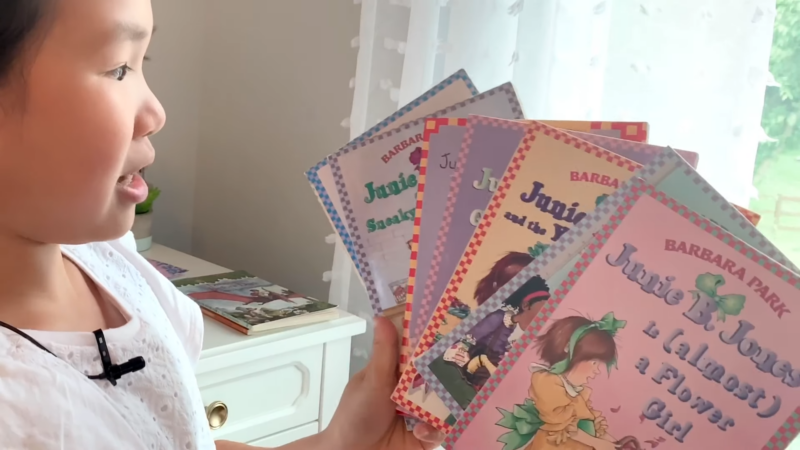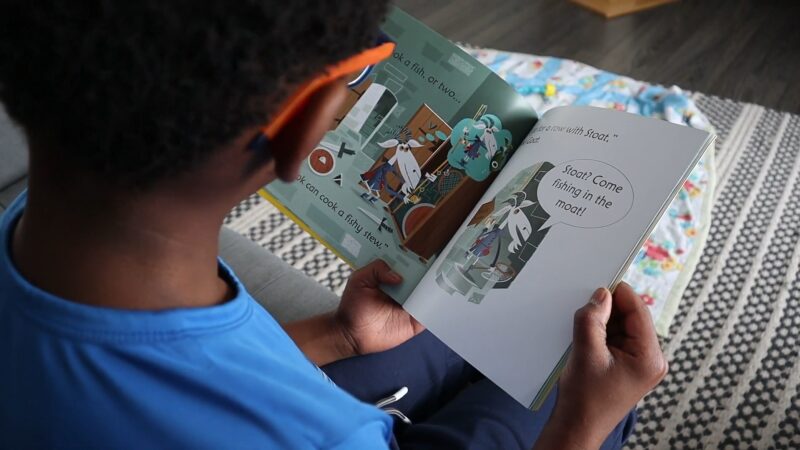When children show resistance to reading, it can be a challenge for parents who wish to foster a love of books in their kids.
Reading reluctance can arise for various reasons, and addressing these root causes is essential to encourage a positive attitude toward reading.
You can take several steps to engage your reluctant reader and make the experience more enjoyable for them.
By identifying what triggers their aversion and tailoring your approach accordingly, you can guide your child on the path to becoming an enthusiastic reader.
Why Are Some Kids Reluctant Readers?

There are various reasons why a child might be hesitant about reading. One common reason is that they might not have found a genre that truly captures their interest. Some kids get restless easily and would rather be active, playing outside instead of sitting with a book.
Often, the difficulty level of the books can also be a significant factor. When books are too challenging, a child may lose confidence and, as a result, avoid reading altogether. It’s essential to understand the different types of reluctant readers to address the issue effectively.
Types of Reluctant Readers
- Those who can’t read: Kids in this category struggle with basic reading skills, making reading a formidable task. For them, the focus should be on building foundational skills with suitable materials.
- Those who won’t read: These children can read, but they prefer other activities like playing outside or socializing. Encouraging them may require integrating reading with their other interests.
- Selective readers: These kids are particular about their reading choices and are typically not receptive to suggestions from adults. They need books that genuinely pique their interest to engage with reading.
Identifying which type of reluctant reader your child is can help you implement the right strategies to make reading a more enjoyable and regular activity for them.
1. Choose Topics Your Child is Interested In

If your child finds reading boring, they are unlikely to continue. The first step to engaging them is to change the reading materials. Reluctant readers are more tempted by subjects that capture their interest, so it is crucial to select genres that excite them.
Solution: Before selecting a new book, consider your child’s interests. What topics make them enthusiastic or curious?
By choosing genres aligned with their interests, you can keep them motivated and eager to read. This approach helps in sustaining their reading habits and makes the experience more enjoyable.
2. Start with Books that Match Their Skill Level
If your child is finding reading challenging, they might be losing confidence due to overly difficult material. This can make them avoid reading sessions altogether. To help them regain confidence, begin with books that are appropriate for their current reading level.
You can use the Five Finger Rule to assess the suitability of a book. Ask your child to read a page, and for every word they struggle with, raise a finger.
If they get to five fingers before finishing the page, the book is likely too difficult for them. Choose books that result in fewer fingers raised to ensure they are manageable and enjoyable.
3. Lead by Example

Your reading habits can significantly influence your child’s attitude towards books. If you don’t actively read around your child, they may not see the value in it.
To make reading more visible and engaging, set aside a specific time each day for silent reading where the whole family reads. Create a cozy reading nook where you and your child can enjoy your books together.
Display your favorite titles prominently at home to show their importance. By doing so, you foster a reading-friendly environment that encourages your child to pick up a book more frequently.
4. Rule out Any Vision Issues
Blurry vision can impact your child’s interest in reading. If your child often squints or finds it difficult to make out letters, it might be due to vision problems.
It is essential to schedule an eye checkup to determine if they need glasses or any other form of vision correction. This step can help ensure that vision issues are not a barrier to their reading progress.
A noticeable improvement in their attitude towards reading might follow.
5. Combine Reading with Play
Children are naturally energetic, making it difficult for them to sit still for extended periods. If your child prefers active play over sitting with a book, try integrating reading into fun activities. For example:
- Cooking: Follow a recipe together, reading instructions and ingredients aloud.
- Scavenger Hunts: Create a list of items to find, with clues written out for your child to read.
- Crafting: Design your own greeting cards, including writing messages to friends and family.
These activities not only keep your child engaged but also incorporate reading in ways that feel like play.
6. Make Reading Fun
Reading often begins to feel like a chore for some young readers. The secret is to approach this gently and with patience. Transform reading into an engaging activity that feels more like leisure than work.
Read aloud together, adding excitement with different voices and tones. Stay patient if they stumble over words, and let them set their own pace without rushing to finish a book. This relaxed approach helps build a positive reading experience.
7. Opt for Shorter Books

Issue: Your child has a short attention span.
Many children find it challenging to focus for long periods. If your child is having difficulty with longer books, consider changing your approach.
For children with shorter attention spans, choose shorter books such as joke books, comic books, and nursery rhymes. You can also break up their reading time into shorter intervals, gradually increasing the duration as their focus improves.
Taking breaks to discuss the story can also help maintain their interest and comprehension. This approach can make reading more enjoyable and manageable for them.
8. Encourage Book Sharing
Children who thrive in social settings may find one-on-one reading sessions too isolating. You can turn this preference into a positive by encouraging book sharing. Organize a book swap at your home and invite your child’s friends.
Each child brings a book to share, and they can take turns reading aloud and discussing the story.
Benefits of Book Sharing
- Promotes Social Interaction: Reading becomes a communal activity.
- Increases Engagement: Children are more motivated to read with peers.
- Enhances Comprehension: Group discussions enhance understanding of the plot and characters.
By embracing your child’s social nature, you can create a shared reading experience that makes literature more enjoyable and engaging.
9. Use Technology to Your Advantage

Issue: Your child isn’t interested in traditional storybooks.
If your child prefers digital experiences over paper books, that’s perfectly fine. Today’s digital options can effectively engage reluctant readers. There are numerous children’s e-books that provide read-aloud features and visually appealing graphics. These elements might capture your child’s interest in reading.
Websites like Reading Eggs offer an extensive library with over 3000 e-books. The titles range from fiction and fantasy to non-fiction and mystery. Embracing these tech resources can turn reading into a fun and interactive experience for your child.
10. Take Turns Reading to Each Other
If your child resists reading alone, consider making it a shared activity.
They might prefer reading with someone else, whether it’s another child or an adult. This can transform reading into an engaging and social experience.
You can start by taking turns reading sections of a book. To deepen their engagement, discuss the story as you go.
Ask them about the plot or their opinions on characters. Encourage them to do the same by formulating questions for you.
This reciprocal interaction not only promotes reading but also enhances comprehension and critical thinking skills.
11. Introduce Them to A New Book Series

When your child struggles to find an interesting genre, it can make reading a chore. An effective approach is to introduce them to a popular book series. The continuity and cliffhangers between books can motivate them to continue reading, chapter after chapter.
Some recommended series include Myth Menders, Ninja Princess Detectives, and Starchasers.
These series and others can be found in the Reading Eggs library, which offers over 45 different book series and 3,000 e-books.
By immersing your child in a series, you provide a comfortable structure and characters they can follow, increasing their enthusiasm for reading.
12. Try Audio Books
Children who are easily distracted might benefit from pairing their reading time with an audiobook. Playing an audiobook while they follow along with their own copy of the book requires more focus, which can help keep them engaged.
This approach combines audio and visual learning, potentially holding their attention better and reducing the allure of external distractions like toys or activities happening around them. It’s an effective way to maintain their concentration and foster a love for reading.
13. Make Time for Reading

Ensuring that a specific time for reading is part of your daily routine can make a significant difference.
Busy schedules filled with kids’ activities, homework, and household tasks can often sideline reading.
Set a dedicated time each day for reading, such as bedtime, after homework, or right after school.
By creating a routine, your children will anticipate this reading time, making it easier to establish a habit.
Read alongside them or to them in a quiet environment where they can focus.
This practice not only improves their reading skills but also enhances their overall love for books.
Continue to Motivate Your Reluctant Reader
Children often engage in activities they believe they can succeed in and see value in. To encourage your child to reach their reading potential, help them recognize the importance of reading. Use positive reinforcement and provide them with reading material that matches their interests and reading level.
You can guide them in becoming a good beta reader, which will enhance their critical thinking and comprehension skills.







